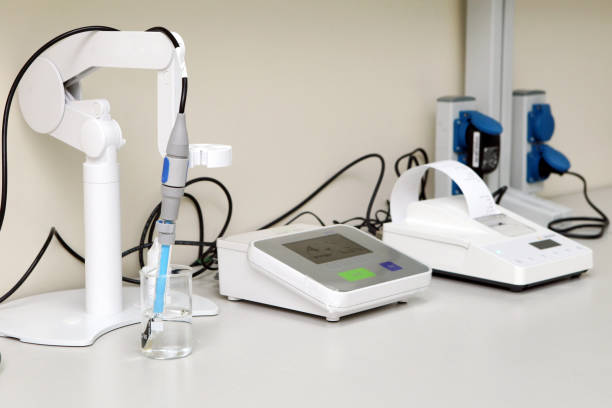Alkalinity as CaCO3

Parameter Type: Drinking Water Testing for Volatiles
Parameter Name: Alkalinity as CaCO3
What it is and Where it Comes From:
Alkalinity is the ability of a liquid or substance to resist a change in pH, or the capacity of water to buffer against an acid. However, you might word it, the main principle is that alkalinity protects against acids. Alkalinity is present in liquids as dissolved minerals like sodium, calcium, and magnesium. These alkali metals are found everywhere in nature, especially in the earth’s crust. Potable water treatment plants sometimes use groundwater as a source, and this water may contain many milligrams per liter (mg/L) of dissolved calcium and magnesium. Some people notice this in their household fixtures and refer to it as hard water, or lime-scale buildup. Commercial products that dissolve this scale usually contain strong acids. Once drinking water reaches a sink or shower drain, it becomes wastewater. Thus, the amount of alkalinity in wastewater treatment plant influent is usually close to the alkalinity in the potable water supply. There are exceptions, especially considering the source and type of drinking water treatment, industrial contributions to the sewer system and rainwater inflow and infiltration. Alkalinity is a measure of the bicarbonates and carbonates in the water. Another way to understand water alkalinity is that it is a measure of the ‘’limestone’’ content in the water. The higher the alkalinity, the more ‘’limestone’’ that is being applied, causing the pH of the growing medium to climb. To offset this pH rise, acids are injected into the irrigation water to neutralize some of the alkalinity and reduce the ‘’limestone’’ content in the water. Drinking water testing gives you several benefits like peace of mind, identifying contaminants in your water, and insight into health concerns. Safe Home offers two platforms of drinking water testing for alkalinity. The first platform in drinking water testing for alkalinity is Do-It-Yourself, this allows you to perform testing in the comfort of your own home. The second platform is a Laboratory drinking water testing kits for alkalinity, allowing you to collect your water sample and ship it directly to our EPA-Certified Laboratory. This platform of drinking water testing will give you an accurate level based on the lowest level of a parameter our instruments can detect (Method Detection Level). Safe Home drinking water testing for physical properties can be used for city and well water supplies. Drinking water testing should be done any time you notice a significant change in your water quality.
Health Effects:
Although alkaline drinking water is considered safe, it may produce negative side effects. Some examples of negative side effects include the lowering of natural stomach acidity, which helps kill bacteria and expel other undesirable pathogens from entering your bloodstream. Additionally, an overall excess of alkalinity in the body may cause gastrointestinal issues and skin irritations. Too much alkalinity may also agitate the body’s normal pH, leading to metabolic alkalosis, a condition that may produce the following symptoms: Nausea, vomiting, hand tremors, muscle twitching, tingling in the extremities or face, and confusion. Alkalosis can also cause a decrease in free calcium in the body, which can affect bone health. However, the most common cause of hypocalcemia isn’t from drinking alkaline water, but from having an underactive parathyroid gland.
Solutions to Contaminant Levels:
Water Treatment Options Since some alkalinity is present in most water supplies and does not present a problem itself, the only reason to adjust the alkalinity is when you want to stabilize the pH levels. Since pH can cause corrosion, it should be addressed to maintain plumbing and preventing premature equipment failure. Alkalinity is often raised when soda ash is fed to also raise the pH. Alkalinity will also be affected by using limestone feed tanks or other neutralizing filters. Who do I need to contact to find out more information about water quality in my area? Every community water supplier must provide an annual report to its customers, known as a Consumer Confidence Report (CCR). The report provides information on your local drinking water quality, including the water’s source, contaminants found in the water, and how consumers can get involved in protecting drinking water. How often does the local public water system preform drinking water testing? Frequency of drinking water testing depends on the number of people served, the type of water source, and types of contaminants. Certain contaminants are tested more frequently than others, as established by the Safe Drinking Water Act. You can find out about levels of regulated contaminants in your treated water for the previous calendar year in your annual Consumer Confidence Report (CCR).


